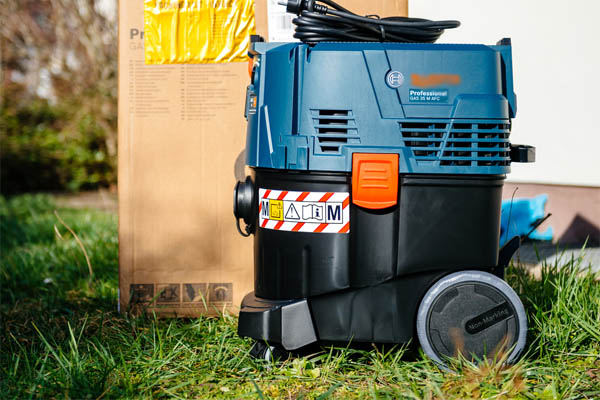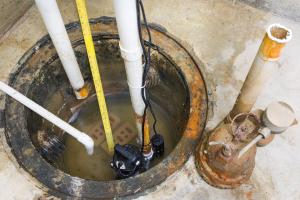Practical Tips for Servicing a Sump Pump
Practical Tips for Servicing a Sump Pump
Blog Article
Right here down the page you can locate lots of professional material involving How to Care for Your Sump Pump.

Sump pumps are critical components in several homes, specifically in areas prone to flooding or extreme moisture. They aid stop water damage by successfully getting rid of excess water from basements or crawl spaces. Nonetheless, like any other home appliance, sump pumps need routine upkeep to ensure they work efficiently when needed the most. Cleaning your sump pump is an essential part of its upkeep, and comprehending just how to do it properly can save you from expensive repair services and potential catastrophes.
Intro
Preserving a clean sump pump is vital for its correct performance and longevity. Disregarding this crucial task can bring about obstructions, breakdowns, and ultimately, water damages to your property. Therefore, finding out how to cleanse a sump pump is critical for home owners who depend on these tools to maintain their cellars completely dry and protected.
Indicators of a Dirty Sump Pump
Understanding when your sump pump needs cleansing is essential for preventing prospective breakdowns. Some usual signs that show an unclean sump pump consist of odd sounds throughout operation, minimized water flow, and noticeable debris in the pit. If you observe any one of these signs and symptoms, it's vital to cleanse your sump pump promptly to stay clear of any kind of more issues.
Planning for Cleansing
Prior to you begin cleansing your sump pump, it's necessary to take some safety precautions. Start by shutting down the power to the pump to prevent any kind of electrical accidents. Furthermore, wear proper protective equipment, such as gloves and safety glasses, to safeguard yourself from dirt, debris, and possible virus.
Comprehending the Sump Pump
Prior to diving right into the cleansing procedure, it's important to have a standard understanding of exactly how a sump pump functions. Normally installed in a pit or basin listed below the basement flooring, a sump pump includes a number of vital elements, consisting of a pump, a float button, and a discharge pipeline. When water accumulates in the pit, the float button turns on the pump, which then pumps the water out with the discharge pipeline, far from the building's structure.
Detailed Overview to Cleaning a Sump Pump
Shutting down the Power
Begin by detaching the power supply to the sump pump to avoid any type of crashes while cleaning.
Looking For Proper Functioning
Before reinstalling the pump, execute a fast test to make certain that the float switch turns on the pump properly. Put some water right into the sump pit and observe the pump's procedure. If whatever is functioning appropriately, you can reassemble the pump and reconnect the power supply.
Removing Debris and Dirt
Make use of a bucket or an inside story to remove any kind of visible debris, dirt, or debris from the sump pit. Dispose of the debris properly to avoid it from clogging the pump or the discharge pipe.
Cleaning up the Pump and Drift Switch
Once the pit is free from debris, thoroughly remove the pump from the pit. Check the pump and the float switch for any kind of indicators of damages or wear. Utilize a soft brush or fabric to clean the surfaces and remove any gathered crud.
Flushing the System
After cleaning the pump and float switch, flush the sump pit with clean water to eliminate any type of continuing to be dust or sediment. This will aid make certain that the pump operates smoothly and successfully.
Upkeep Tips to Maintain Your Sump Pump Clean
In addition to routine cleaning, there are several upkeep suggestions you can follow to maintain your sump pump in optimum problem:
Final thought
Cleaning your sump pump is a vital aspect of its maintenance and makes certain that it operates effectively when you need it one of the most. By complying with the steps outlined in this guide and integrating regular upkeep right into your regimen, you can expand the life expectancy of your sump pump and secure your home from water damages.
How to Clean a Sump Pump
Steps to Clean a Sump Pump
After checking to make sure your sump pump is off, disconnect the pump from the discharge pipe. Wrap your pump in plastic to prevent drips and carry it outside. Using your garden hose, rinse off any dirt or sludge from the surface of the pump. A plastic scraper or putty knife may be necessary to clean out the sump pump and remove caked-on debris. Leave it in a safe place to dry. Drain any standing water from your sump pit using a shop vac. If you have a check valve that can be disassembled, carefully disassemble it and allow any water to drain out of your check valve first, then remove it. Rinse the valve thoroughly with water, then dry and reassemble it. Once thoroughly dry, reattach your pump to the discharge pipe. Plug your unit back in. You’re all done! https://www.mrrooter.com/about/blog/2019/april/how-to-clean-a-sump-pump/

Do you like reading about Cleaning & Maintenance Tips for Your Home's Sump Pump? Write a remark further down. We'd be glad to hear your thinking about this blog. Hoping to see you back again soon. If you please take the opportunity to distribute this blog entry if you liked it. I cherish reading our article about Keep Your Sump Pump Clean, It'll Keep You Dry.
Visit Site Report this page